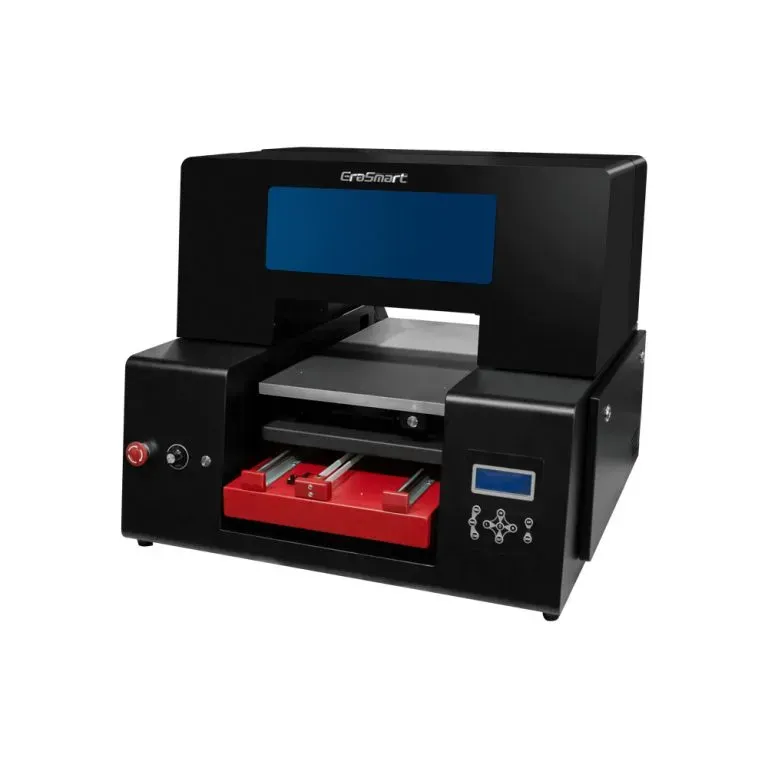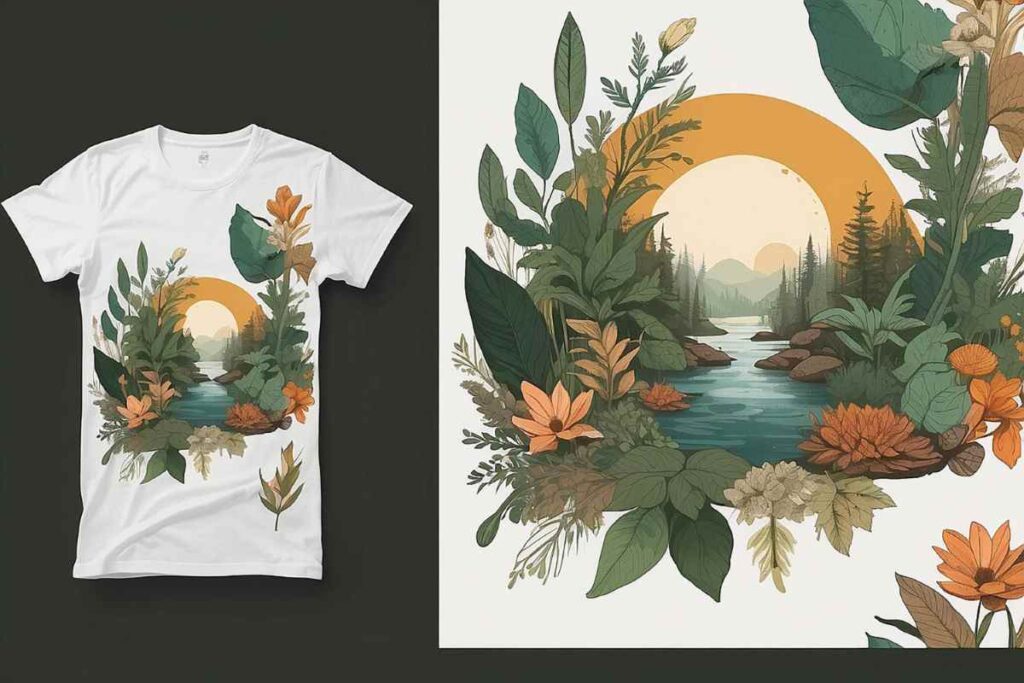In the world of modern printing, UV DTF technology has emerged as a revolutionary solution that offers a unique blend of durability and vibrant output. By leveraging advanced UV printing techniques, this innovative method enables print shops to create high-quality prints on a variety of surfaces, including textiles and rigid materials. The fusion of DTF printing with UV technology not only enhances print quality but also expands the versatility of applications. With its ability to produce striking visuals that are highly resistant to fading and wear, UV DTF is quickly becoming a preferred choice among businesses seeking to meet the growing demands for custom products. This article will delve into the pros and cons of UV DTF technology, along with its diverse applications that make it indispensable for today’s print industry.
In an era where print technology continues to evolve, Direct to Film (DTF) printing has taken a giant leap forward with the introduction of UV curing methods. This cutting-edge printing approach combines the benefits of traditional DTF processes with the efficiency and quality that UV printing offers. The result is a high-capacity solution capable of producing intricate designs and vivid graphics on multiple substrates. As printers explore the range of uses for this technology, they can uncover opportunities in areas such as custom textiles, promotional goods, and long-lasting signage. Exploring the applications of UV DTF technology reveals why it has become a go-to choice for print shops aiming to stay ahead in a competitive market.
Understanding UV DTF Technology
UV Direct to Film (DTF) technology stands at the forefront of modern printing techniques, merging traditional methods with revolutionary UV ink innovation. This advanced process utilizes specialized UV inks that cure instantly upon exposure to UV light, resulting in strikingly vibrant prints. Unlike conventional DTF printing, which often relies on water-based inks that can fade or smear, UV DTF guarantees stunning visuals characterized by rich colors and crisp details. This delineation not only enhances the visual appeal of the final print but also positions UV DTF as a favored choice among print shops aiming for excellence.
The technology’s exceptional adaptability allows it to work on a plethora of substrates, including textiles, plastics, and metals. This versatility is a significant selling point for print shops, enabling them to cater to various market demands from custom apparel designs to creating unique promotional items. As the market continues to evolve, understanding the intricacies of UV DTF technology becomes crucial for printers seeking to stay ahead, providing prints that meet the escalating expectations for quality and durability in today’s competitive landscape.
Pros and Cons of UV DTF Printing
When evaluating the UV DTF printing process, it’s essential to weigh both its advantages and drawbacks. Among the most prominent benefits is the high-quality output that this technology can achieve. The wide color gamut and sharp resolution make it ideal for intricate designs, allowing print shops to deliver products that captivate customers. UV DTF prints demonstrate remarkable durability, resisting fading and physical wear, which substantiates their appeal for both indoor and outdoor applications.
However, the initial investment required to adopt UV DTF technology poses a challenge for many print shops. Acquiring state-of-the-art printers and the necessary equipment can strain budgets, particularly for smaller businesses. Alongside this financial barrier, the complexity of managing color settings and process calibrations may necessitate additional training for staff, further complicating the transition to this innovative printing method. Thus, while UV DTF technology offers notable pros, careful consideration of its cons is vital for print shop owners.
Applications of UV DTF Technology in Printing
The versatility of UV DTF technology translates into a multitude of applications that can be leveraged by print shops. One of the most popular usages is in custom apparel, where the ability to print vivid designs on fabrics allows for personalized clothing options that resonate with consumer trends. Print shops can produce everything from branded t-shirts to uniquely designed hoodies, catering to a diverse clientele looking for bespoke fashion.
In addition to apparel, UV DTF is optimal for promotional items such as bags, mugs, and other accessories. The technology’s robustness ensures that these items not only look great but also withstand the rigors of daily use. Furthermore, the capabilities extend to signage and interior décor, where weather-resistant prints offer longevity in various environments. This breadth of application solidifies UV DTF’s position as a go-to solution for print shops aiming to fulfill a range of customer needs.
Current Trends in UV DTF Printing
The landscape of UV DTF printing is rapidly evolving, marked by recent advancements that enhance its accessibility and efficiency. Print shops are increasingly adopting this technology not only to elevate their print quality but also to remain competitive in a market that continuously demands innovative solutions. Industry trends indicate a growing preference for high-quality and durable prints that can deliver impressive results within shorter turnaround times.
As consumer expectations shift towards eco-friendliness and sustainability, many UV DTF inks are being formulated to reduce volatile organic compounds (VOCs), signaling a positive trend in aligning printing practices with environmental concerns. This move not only helps print shops appeal to eco-conscious customers but also positions them as responsible contributors to a greener printing world. Tracking these trends helps printers stay relevant and competitive in a dynamic industry.
Key Benefits of Adopting UV DTF Technology
Adopting UV DTF technology provides significant benefits for print shops aiming for high-quality outputs in their product offerings. The advanced nature of UV inks results in prints that not only look stunning but also endure longer than traditional printing methods. Customers are increasingly demanding products that retain their color vibrancy and clarity, and UV DTF meets these needs with ease, setting a new standard in print quality.
Moreover, the quick curing process associated with UV inks translates into faster production rates, allowing print shops to optimize their workflow. This efficiency enables shops to handle larger volumes of orders without compromising on quality, which is crucial in a fast-paced environment where meeting customer deadlines can make or break a business. These key benefits underscore why UV DTF technology is becoming an essential asset for modern printing operations.
Challenges of UV DTF Printing Adoption
Despite its numerous advantages, the transition to UV DTF printing is not without challenges. One of the foremost hurdles is the significant initial investment required for the printing equipment and necessary setup. This can deter smaller print shops from embracing the technology, as the costs may not align with their immediate budgetary capabilities.
Additionally, there is a learning curve involved in operating UV DTF printers, particularly in mastering color management and operational protocols. Staff training becomes essential to ensure that the full potential of the technology is realized, which can add to the overall costs. For those willing to invest the time and resources into overcoming these challenges, the long-term benefits of UV DTF printing make it a worthy endeavor.
Frequently Asked Questions
What is UV DTF technology and how does it work?
UV DTF technology, or UV Direct to Film printing, combines UV printing methods with the DTF process to create high-quality prints using specialized UV inks. This process involves printing onto a unique film, which is then cured with UV light to ensure vibrant, durable images suitable for various substrates.
What are the main pros and cons of UV DTF printing?
The pros of UV DTF printing include high-quality prints with a wide color gamut, durability against fading and damage, and versatility in printing on different materials. However, the cons include higher initial investment costs, the need for specialized training, and the expense of UV inks compared to standard options.
What applications can benefit from UV DTF technology?
UV DTF technology is highly versatile and can be applied in custom apparel printing, promotional products, indoor and outdoor signage, and unique interior décor items. Its ability to produce high-quality, long-lasting prints makes it suitable for various markets.
How does UV DTF printing compare to traditional DTF printing?
While traditional DTF printing uses water-based inks that require heat transfer, UV DTF printing leverages UV-curable inks that instantly cure upon exposure to UV light, providing enhanced durability and quality. This results in brighter colors and the ability to print on a wider range of substrates.
Are there environmental considerations with UV DTF inks?
Yes, many UV DTF inks are designed to have reduced volatile organic compounds (VOCs), making them a more eco-friendly choice compared to traditional inks. This environmental aspect appeals to consumers who prioritize sustainability in their purchasing decisions.
What should print shops consider before investing in UV DTF technology?
Print shops should weigh the initial investment costs for UV DTF printers and inks, the need for specialized training to operate the technology effectively, and the impact on production costs. These considerations are crucial for ensuring that the benefits of UV DTF printing align with business goals.
| Key Points | Description |
|---|---|
| What is UV DTF Technology? | UV DTF printing uses UV inks and a film transfer process for high-quality, vibrant prints on various substrates. |
| Key Benefits | 1. High-Quality Prints: Exceptional print quality with a wide color gamut. 2. Durability: Resistant to fading, scratching, and water damage. 3. Versatility: Can print on textiles, plastics, and metals. 4. Quick Turnaround: Fast production times due to instant curing. 5. Eco-Friendly: Reduced VOCs in many UV inks contribute to sustainability. |
| Considerations | 1. Initial Investment Costs: High upfront costs can deter smaller shops. 2. Training Needs: Complexity in operation requires staff training. 3. Cost of Inks: Higher price of UV inks compared to standard options. |
| Applications | – Custom Apparel: Unique garment designs. – Promotional Items: Printing logos on various products. – Indoor/Outdoor Signage: Weather-resistant capabilities. – Interior Décor: Customized materials for decorative purposes. |
| Current Trends | Growth in the adoption of UV DTF technology is enhancing print quality and customer satisfaction across the industry. |
Summary
UV DTF Technology is revolutionizing the printing industry by offering high-quality, durable prints while catering to diverse applications. As businesses strive to differentiate themselves in a competitive market, adopting UV DTF technology becomes essential. Its capabilities to produce vibrant colors and withstand various environmental factors allow print shops to deliver products that meet customer expectations effectively. Despite some challenges like initial investment and training, the benefits of enhanced print quality, quick turnaround times, and eco-friendliness make UV DTF a valuable asset for modern print shops aiming for sustainability and competitiveness.


